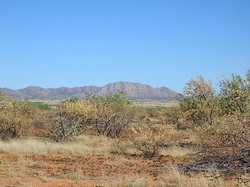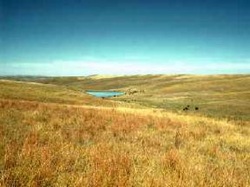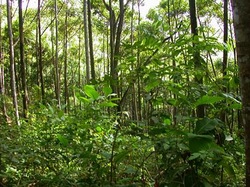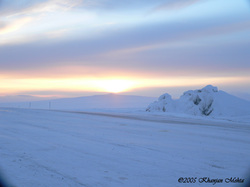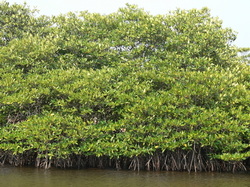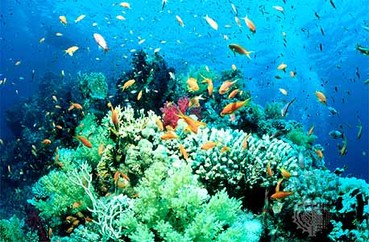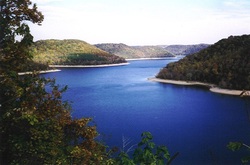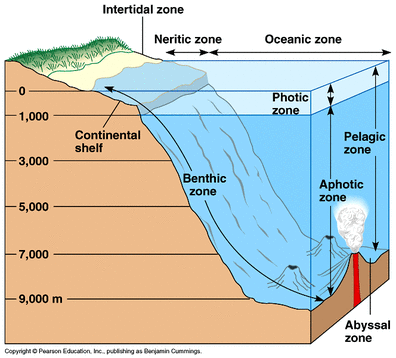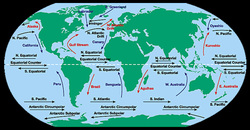The Biosphere
Climate
Climate is the average weather conditions, including temperature, humidity, wind velocity, cloud cover, and rainfall over time.
The Biomes
A biome is a large region of land characterized by habitat conditions and by its community structure, including endemic species, which evolve nowhere else.
Deserts
A desert is Desertification is a biome that forms where the potential for evaporation greatly exceeds rainfall, and where soil is thin and vegetation.
Dry Shrublands, Dry Woodlands, & Grasslands
A dry shurbland is a biome that forms when annual rainfall is less than 25 to 60 centimeters with short, multibranched woody shrubs. A dry woodland is a biome that forms when annual rainfall is about 40 to 100 centimeters possibly tall trees, but no dense canopy. A grassland is a biome that has flat or rolling land, 25 to 100 centimeters of annual rainfall, warm summers, distinct array of grazing animals, and recurring fires that regenerate dominant plant species. A savanna is when rainfall is between 90 to 150 centimeters and prolonged seasonal droughts are common.
Tropical Rain Forests & Other Broadleaf Forests
A evergreen broadleaf forests sweep across tropical zones of Africa, the East Indies, and Malay Archipelago, Southeast Asia, South American, and Central America with an annual rainfall of 130-200 centimeters. A tropical rain forest is a biome characterized by regular, heavy rainfall, and an annual mean temperature of 25 degrees Celsius, humidity of 80% or more, and stunning biodiversity.
Coniferous Forests
A coniferous forest is A southern pine forests have needle-shaped leaves with a thick cuticle and recessed stomata. They dominate the boreal forests, montane coniferous forests, temperate rainforests, and pine barrens.
Arctic & Alpine Tundra
A tundra is a treeless plain between the polar ice cap and belts of boreal forests in Europe, Asia , and North America with cool temperatures in the summer and below freezing temperatures in the winter. Permafrost is a permanently frozen layer beneath the soil surfarce in arctic tundra and water cannot even penetrate in it in the summer.
Mangrove Wetlands
A mangroove wetlands are tidal flats near the sea. The ocean cannot reach these so sediments and mud is collected there.
Coral Reefs & Coral Banks
Coral reefs are wave-resistant, nutrient-rich formations in the nutrient-poor tropical seas. Coral banks are constructed when solitary corals and small colonies in temperate seas.
Freshwater Provinces
A lake is a body of standing fresh water produced by geologic processes, as when an advancing glacier retreats, water collects in the exposed basin. A spring overturn is a springtime downward movement of dissolved oxygen near the surface, and an upward movement of nutrients from the bottom sediments to the surface that fans primary productivity. A fall overturn is a vertical mixing of water in autumn as its upper layer cools. Eutrophication is a name for processes that enrich a body of water with nutrients. A stream is a flowing-water ecosystem that starts out as a freshwater spring or seep.
Ocean Provinces
Ultraplankton is primary productivity is performed by these creatures. There are really mall bacterial cells that live in the deep ocean waters. Hydrothermal vent ecosystem is near a streaming fissure in the the ocean floor.
Estuaries & The Intertidal Zone
An estuary is a partially enclosed coastal region where seawater mixes with fresh water and runoff from the land, as by streams and rivers. An intertidal zone is An upwelling is the region above the low water mark and below the high water mark of a rocky or sandy shore.
